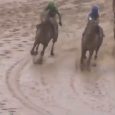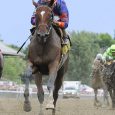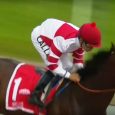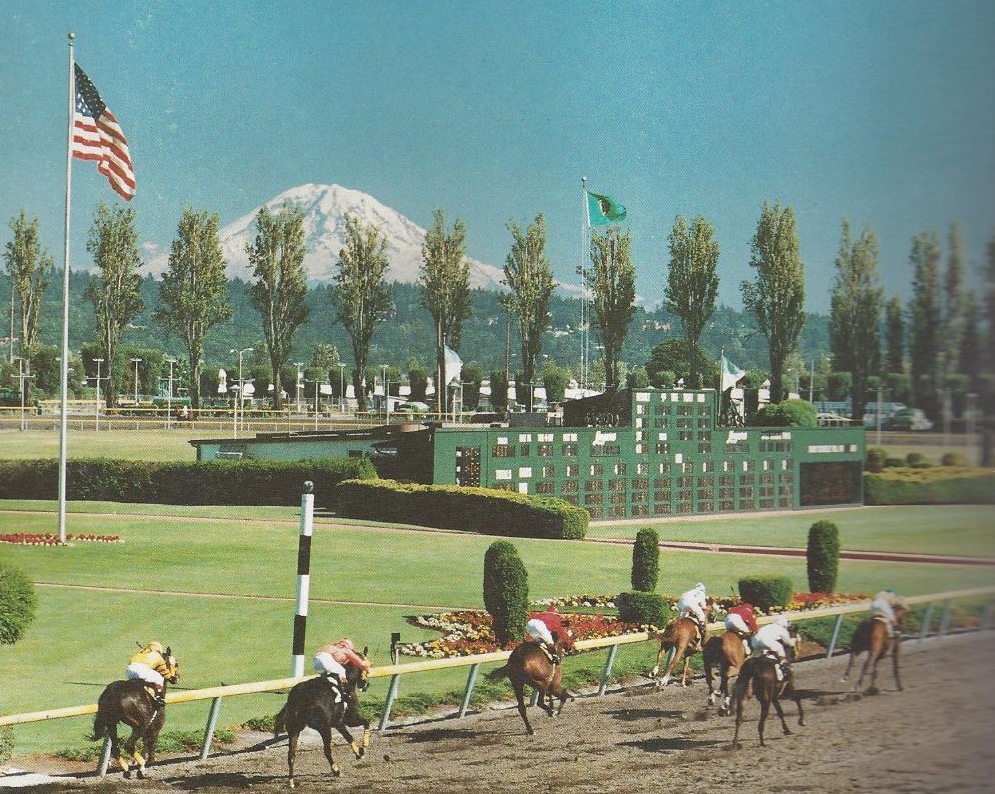
Longacres Racetrack (photo via the Seattle Times)
I love horse racing.
Ever since I went to Longacres for the first time and watched a horse named Utah Canyon crush the field in the feature, I’ve been hooked. In fact, my obsession with the Sport of Kings was once so bad that a former girlfriend accused me of caring more about the first race at Aqueduct than I did about her.
Obviously, that was a ridiculous claim. The first race was part of a daily double — I cared about the second race too.
I hate horse racing.
As a shy teen, I tried to apply for a job at Longacres only to hear one of the Alhadeffs instruct a track employee to “get rid” of me. For those who don’t know, the Alhadeff family inherited Longacres after Luella Gottstein, wife of track founder Joe Gottstein, passed away.
On Sept. 27, 1990, less than a year after Luella’s death, Ken Alhadeff, senior vice president of Longacres uttered the words that still reverberate in my brain some 25 years later. Longacres, Alhadeff said, was “no longer economically viable … to operate.”
So, despite an offer from the buyer (aerospace giant Boeing) to keep the track running for another three years to make the transition easier on the horsemen, the Alhadeffs declined, again citing economics as one of the key reasons that Longacres, which had opened its doors in 1933 and had weathered World War II, couldn’t hang on for another 36 months. (As it turned out, Boeing had no such economic qualms and allowed the non-profit Emerald Racing Association to operate the track — rent-free — for two more years while Emerald Downs was being planned and built).
If I sound bitter it’s because I am.
I made my last trek to Longacres Park (as it was then called) when the track was offering simulcasting only. It was winter and a rare Seattle snowfall had left the inner rail coated with a thin layer of white.
Despite the cold, I was on fire, hitting races like Johnny Manziel hits a beer bong. As the day drew to a close, however, my mood grew somber. I realized that this was it — my final visit to the track that I had grown up at. I remember watching a huge flock of birds (there were always birds in the Longacres infield… although I’m sure the Alhadeffs did their best to run them off as well) take to the sky, as though they too understood the finality of the moment. As I watched them fly away, I couldn’t help but think that a part of me was going with them, a part I knew I was going to greatly miss one day.
I gave a big tip to my waitress — the 10-horse in an upcoming race (kidding, kidding) — and made my way slowly out the doors for the last time.
Since that day, racing has never been quite the same for me. Oh, I still love the sport; love the spectacle; love the mental challenge of handicapping. But the part that moved me — the awe, the wonder — is gone.
Maybe it’s just getting older. After all, I once thought Bert and Ernie on “Sesame Street” were a real hoot. Now I wonder how two guys — both of whom appear to be chronically unemployed — can afford to live together for so many years… and why?
It’s been said that with age, comes wisdom. The dawn of learning brings with it the death of magic. In some ways, I guess it’s only natural that the mystical allure of racing would lose its hold on me as I learned more and more about the sport.
But I wonder how much of it has been beaten out of me by folks like the Alhadeffs and other guardians of the game?

Sadly (and with much angst), I must concede that the Alhadeffs were right: operating a racetrack, in many instances, is not economically viable.
Since the sale of Longacres in 1990, purses in North America have gone up 53.1 percent, while handle has inched up 13.7 percent. Given that, in theory at least, the latter feeds the former, what does this say about the health of the Sport of Kings?
Yet, getting horse people to acknowledge the economic realities of the game — no, John Aint-Got-No-Doe your horse is not “worth” $25,000, that is just a price that other likeminded individuals have put on it — is akin to beating one’s head against a wall: fruitless and likely to result in brain damage if carried on too long.
And racing fans and bettors, my brethren, don’t get it either.

James McIngvale
James McIngvale, owner of Champion Sprinter Runhappy, has been called a nincompoop by some — and those are the nice ones. By his own admission, he has spent more than $40 million buying and racing thoroughbreds in his lifetime, yet, prior to 2015, the most McIngvale’s horses had banked in a single year was $1,396,671 (in 2004).
Even those who use Common Core Math can decipher — in a day or two — that “Mattress Mack” has taken a proverbial bath in the horse racing game. And this, according to some, is proof positive that the man, with his unconventional ways and penchant for firing trainers, is a moron.
Alas, there is a problem with this logic.
In 1982, former quarter horse trainer D. Wayne Lukas had just started making a name for himself in the thoroughbred game when he met Eugene Klein, then owner of the San Diego Chargers. From that point until 1989, when Klein left the game due to poor health, he and Lukas revolutionized the sport.
In seven years with Lukas, Klein owned six champions, two of which are in the Hall of Fame, and he earned 11 Eclipse Awards, including Outstanding Owner three years in a row (1985-87).
During that same time period, Lukas’ horses went from earning $4,181 per start to notching $9,587 a start. Oh, and he also won three consecutive Eclipse Awards (for top trainer) from 1985-87.
In 1990, United Press International (UPI) voted Klein the top owner of the decade and Lukas the top trainer of the decade.
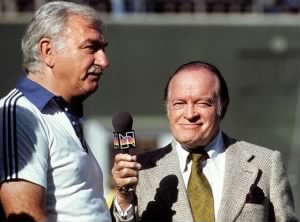
Eugene Klein (left) with Bob Hope
But here’s the kick in the groin: According to an article by the great turf writer William Nack that appeared in Sports Illustrated on May 9, 1988, shortly after the Klein-owned and Lukas-trained Winning Colors became just the third filly to win the Kentucky Derby, Klein’s losses — even at the height of his racing career — were staggering.
Despite $19 million in purse earnings to date, Klein told Knack that he had spent almost $39 million on yearlings and weanlings since 1983 and that it cost him $300,000 a month just to keep his various stables running.
“Even if you say it fast, that’s a lot of money,” Klein said.
Once again, even Common Core mathematicians can figure out — after a week or two — that the numbers just don’t add up. From 2006-15, as the list of tracks that were “no longer economically viable to operate” grew, purses fell by 2.4 percent, while the median cost of horses sold at auction rose by 46.7 percent, according to Bloodhorse statistics.
But, while the Sport of Kings is in flames, owners are told to shut up and trust the industry folks who are carrying the torches. We should hate guys like James McIngvale who want things done their way — with no drugs.
We should continue to delude ourselves into thinking that a top thoroughbred is worth more than a house on the beach in Florida… or a whole block of houses.
We should hold steadfast to the belief that higher purses mean higher quality racing… as is being demonstrated at such venues as Mountaineer Park and Thistledown.
I hate horse racing.
I love horse racing.

